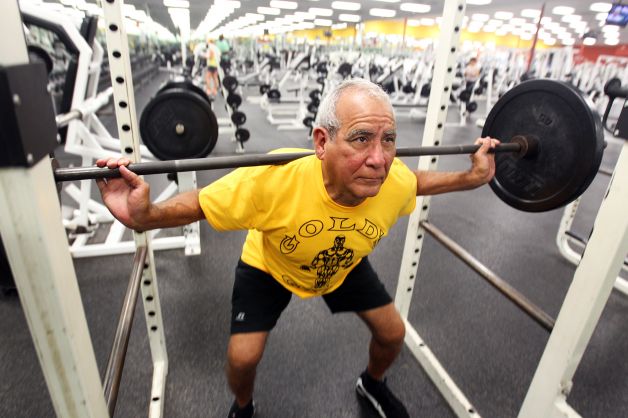Newswise — ROCHESTER, Minn. — Modern lifestyle factors, such as texting, reaching for your keyboard or wearing high heels, can create postural stressors that often cause muscle imbalances and injury. Having good posture is essential for good health; however, understanding what good posture is and maintaining it are hard.

When some people try to work on their posture, they tend to overdo it,” says Alynn Kakuk, physical therapist at the Mayo Clinic Healthy Living Program. “They get into a super-extended position with their shoulders way back — enough that it creates too much of an arch on their back. So, they just start shifting their weight too far back.”
Bad posture habits can cause imbalanced body alignment, strain on ligaments and muscles, chronic pain, injuries, impingement, low back pain, neck pain, hip pain, joint stiffness and muscle tightness, according to Kakuk.
Simple exercises, stretches and being conscious of your posture can eliminate these ramifications.
Practice a healthy posture
Stand up against a wall, and make sure your upper back, shoulders and bottom touch the wall. Your feet don’t have to be against the wall — just a couple of inches away from it. You should have a slight space in your lower back and be able to fit your hands in that space. But, make sure it’s not a big gap. Then, step away from the wall, and try to see if you can maintain that position. Keep in mind, strengthening your muscles will make it easier for you to maintain that posture overtime. Be careful of overdoing it or hyper-extending your back.
Using technology with a healthy posture
In a world filled with modern technology, reaching for your cellphone and keyboard are common movements. These movements can place stress on your upper back and neck, resulting in rounded shoulders and forward head. This can cause chronic upper back, shoulder, neck pain and headaches. Also, people can text so much that they develop pain and injury in their thumbs from that overuse. Here are some tips on how to maintain the correct posture while using technology.
Try to have your cellphone at eye level, so you’re not bending forward.
Do exercises that strengthen your upper back and shoulder, such as chest exercises to strengthen your pectoral muscles and diaphragmatic breathing techniques to release tension.
Stay aware of your posture throughout the day.
Ergonomics at the office
Those who sit at a desk all day should be conscious of posture and the importance of getting up at least once an hour to move. “Standing up and focusing on good posture for a few minutes can relieve muscle strain and improve breathing and circulation, which also helps improve attention and engagement,” says Deborah J. Rhodes, M.D., physician and cancer researcher at Mayo Clinic. Nonetheless, having good office ergonomic habits can keep your muscles and ligaments healthy. Here are some tips on ergonomics at the office.
Ensure your keyboard is at elbow height, so your hands can rest on the desk.
Place your computer at eye level. Place laptops on platforms for them to be at eye level.
Set your chair at a height that your feet touch the ground.
Take a walk or stretch break every hour.
Walking in high heels with the correct posture
Walking in heels is essentially walking on your toes, which results in a chain reaction on the rest of your body. It causes the knees to hyperextend, the pelvis to tip forward, the lower back to tighten, and the abdominals to become weak. Here are some tips on how to maintain the correct posture while using high heels.
When wearing heels, ensure you draw in your abdominal muscles to prevent that extra curve in your low back.
Try to limit the use of your heels.
Pick a heel that is smaller with a wider surface area that will help distribute your foot and weight better.
Maintaining good posture can help you walk, sit, stand and lie in positions that cause the least pressure on your muscles and ligaments during movement and weight-bearing actions.
It also gives confidence.
“People who have better posture tend to appear more confident and knowledgeable to others. It makes them feel confident internally as well,” says Kakuk.
###
About Mayo Clinic
Mayo Clinic is a nonprofit organization committed to medical research and education, and providing expert, whole-person care to everyone who needs healing. For more information, visit
www.mayoclinic.org/about-mayo-clinic or
http://newsnetwork.mayoclinic.org/.
























